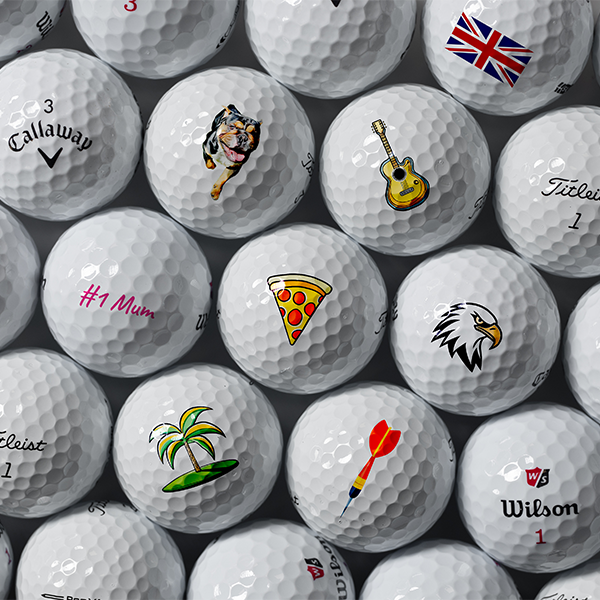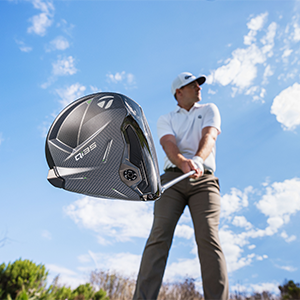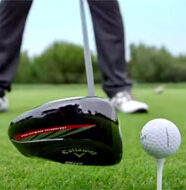
Cavity Back Heads - Often made from cast steel, Cavity Back Irons are the most forgiving of the three styles and represents the main choice for high handicap to low-teen handicap players. By moving the weight from the back centre of the golf club and relocating that weight around the back perimeter of the club head makes it more forgiving and also increases the size of the ‘sweet’ spot, while for off-centre hits the head of the club will produce less twist. Club heads with wide soles tend to be for high handicap golfers and entry level players as this puts a lot of the club head’s weight low at the centre of the Cavity Back, which helps get the golf ball up in the air easier while bouncing through the turf. This also assists on heavier shots too, with the golf ball getting airborne.
Some manufacturers offer golf club heads with materials such as titanium and tungsten inserts that tend to make the club more expensive. Titanium is lighter and stronger then steel and can be put in as a face insert, thus allowing the golf ball to spring off the clubface faster. The term used for these is hot face clubs. Tungsten is heavier than steel but is forgiving by putting more dense weight behind the off-centre shots.
Cavity Back golf clubs that have a narrower sole tend to be aimed at mid-handicap golfers, with the centre of gravity not so far back and with less weight around the outside of the head. This helps bring down the golf ball flight and gives players more feedback from the club head with more control over the golf ball. A prime example are the Titleist T300 Steel Irons.
Muscle Back Heads - Muscle Back Heads are more often Forged and the golf clubs are less forgiving than Cavity Backs. Forged heads are made from softer steel that offers more feel and feedback to assist golf ball improvement in striking and control of golf ball flight. Improved shot shaping allows golfers to fade or draw the golf ball at will and this gets more spin on the ball so it will stop very quickly once it lands on the green.
Sometimes tungsten is inserted in the toe of heel of the golf club to put extra weight behind off-centre shots with the one aim of increasing forgiveness. With s smaller ‘sweet’ spot than Cavity Back heads, weight is placed behind the ‘sweet’ spot to provide a more penetrating golf ball flight. The Callaway Golf Apex MB Chrome Steel Irons are a fantastic Muscle Back iron aimed at the lower handicap golfer.
Blade Heads - These irons tend to be of a forged construction and are closely related to the Muscle Back golf club head in that they share similar traits. Bladed Heads offer even less forgiveness and the golf ball needs to be struck accurately near to the ‘sweet’, therefore all of the weight is positioned behind the back of the club head for even more workability and control. The player is immediately penalized for any off-centre shots and will find their results get poorer than with similar shots made with a Cavity Back head, but in the right handed, irons like this can produce amazing results. The TaylorMade P7TW Limited Edition Steel Irons are a bladed iron that would feel at home only in the very low handicap golfer or professional.
Shafts - Shafts are very important to golf club selection. Heavier shafts suit faster swing temps whilst Lighter shafts lean towards benefiting slower swing temps and slower swing speeds. Graphite shafts are good options for golfers with very slow swing speeds and may provide additional assistance to players with problems relating to their joints as Graphite tends to dampen down vibrations which travel back up the shaft following a shot.
Picking a shaft that is too stiff will make it incredibly difficult for the player to square the golf club face when the club head is coming through the impact zone which can result in low fade in the ball flight. If too flexible the club face may get too far ahead of the hands resulting in an unintentional pull or draw.
Grip Size - Another important aspect is grip size. The correct grip dimensions enable the golfer to return the club face square to the target at the point of impact. Too thick a grip will limit the players ability to properly release the wrists through the impact area, thus resulting in a block and/or fade. At the same time, however, too thin a grip can cause an early release that results in a pull and/or draw. Loss of power is another symptom of incorrect grip thickness.
Lie Angle - If the Lie Angle is too flat the toe of the golf club will hit the ground and twist the head ‘open’, which will result in a fade. If the Lie Angle is too upright then the heel of the club head will strike the ground and twist the head ‘closed’ to cause a Draw or Hook.
Length of Club - Quite simply, the length of the golf club allows golfers to stand in a good posture over the golf ball without dipping or gripping down on the shaft. Bad posture can stop you being able to swing the club correctly and in worse case scenarios lead to injury, so choosing the correct length for each golf club and factoring in static measurements should always be taken into consideration before buying.
Custom Fitting - Get a Free Custom Fit with one of our Fitting Experts to help you make all these decisions. Fittings will be clear, concise and will cover all your needs. We are all different, that's why we make it personal.

















